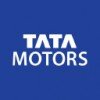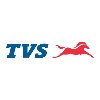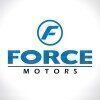Filter interviews by
Swaraj Engines Interview Questions and Answers
8 Interview questions
SI engines use spark plugs for ignition, while CI engines use compression for ignition.
SI engines have a spark plug to ignite the air-fuel mixture, while CI engines rely on compression to ignite the fuel.
SI engines are used in petrol/gasoline vehicles, while CI engines are commonly found in diesel vehicles.
SI engines have a higher power-to-weight ratio compared to CI engines.
SI engines are more fuel-efficient at l...
Megger is used to measure insulation resistance in electrical systems.
Megger is a type of insulation tester used to measure the resistance of insulation in electrical systems.
It is used to detect any insulation breakdown or leakage in the system.
The Megger applies a high voltage to the insulation and measures the resulting current flow.
The resistance value is then displayed on the Megger's screen.
Megger testing is...
Earthing test is done to ensure proper grounding of electrical equipment and to prevent electrical hazards.
Disconnect the equipment from the power source
Connect the earth tester to the equipment's earthing point
Measure the resistance between the earthing point and the ground
Ensure the resistance is within the acceptable range
Repeat the test periodically to ensure continued safety
A flywheel is a mechanical device used to store rotational energy. It is used in various applications such as engines and power plants.
Flywheels are used to maintain a constant speed in machines that experience fluctuations in power supply.
They are also used to store energy and release it when needed, such as in hybrid cars.
Flywheels can be made of various materials such as steel, aluminum, and carbon fiber.
They a...
An engine is a machine that converts fuel into mechanical energy to power a vehicle or other machinery.
Engines come in various types, including gasoline, diesel, electric, and hybrid.
They work by igniting fuel in a combustion chamber, which creates pressure that moves pistons and turns a crankshaft.
The power generated by the engine is used to propel a vehicle or operate machinery.
Engines require regular maintenanc...
Parts of an engine include cylinder, piston, crankshaft, camshaft, valves, spark plug, fuel injector, connecting rod, flywheel, and timing belt.
Cylinder - where combustion takes place
Piston - moves up and down in the cylinder
Crankshaft - converts linear motion to rotational motion
Camshaft - controls the opening and closing of valves
Valves - regulate the flow of air and fuel into the cylinder
Spark plug - ignites th...
An engine converts fuel into mechanical energy to power a vehicle or machine.
Fuel is ignited in a combustion chamber, creating high-pressure gases that push pistons.
The pistons turn a crankshaft, which converts the up-and-down motion into rotational motion.
The rotational motion is transferred to the wheels or other machinery to create movement.
Different types of engines include gasoline, diesel, electric, and hybr...
The crankshaft converts reciprocating motion into rotational motion.
Converts linear motion into rotational motion
Transfers power from pistons to drive train
Consists of main journals, rod journals, and crankpins
Balancing is important to reduce vibration and wear
Commonly made of forged steel or cast iron
Used in internal combustion engines, steam engines, and pumps
Swaraj Engines Interview Experiences
10 interviews found
(2 Questions)
- Q1. Tell me about urself
- Ans.
I am a passionate and creative design engineer with a strong background in mechanical engineering and a proven track record of delivering innovative solutions.
I have a Bachelor's degree in Mechanical Engineering from XYZ University.
I have 5 years of experience working in the automotive industry, where I designed components for electric vehicles.
I am proficient in CAD software such as SolidWorks and have experience with...
- Q2. Why are u looking for job change
- Ans.
Seeking new challenges and opportunities for growth in a different work environment.
Looking for new challenges and opportunities for growth
Interested in exploring different work environments
Seeking to expand my skill set and knowledge
Want to work on more innovative projects
- Q1. How work photo sensor
- Q2. How work hydrolic machine
- Q3. How work MMC
I applied via Recruitment Consulltant and was interviewed in May 2024. There was 1 interview round.
(2 Questions)
- Q1. Your qualifications
- Ans.
I hold a degree in Computer Science and have extensive experience in software development and project management.
Bachelor's degree in Computer Science from XYZ University.
5 years of experience in software development, specializing in web applications.
Proficient in programming languages such as Java, Python, and JavaScript.
Led a team of developers in a successful project that increased efficiency by 30%.
Certified in Agi...
- Q2. Your destination
(3 Questions)
- Q1. HR question is about my resume
- Ans. Full knowledge of my resume and my stelezition
- Q2. Quastion releted is quality department
- Q3. Knowledge of 5s
I applied via Approached by Company and was interviewed in Jan 2022. There was 1 interview round.
(3 Questions)
- Q1. Motor winding fault check
- Ans. Use for multimeter& resistance mode check winding
- Q2. How to do Earthing Test?
- Ans.
Earthing test is done to ensure proper grounding of electrical equipment and to prevent electrical hazards.
Disconnect the equipment from the power source
Connect the earth tester to the equipment's earthing point
Measure the resistance between the earthing point and the ground
Ensure the resistance is within the acceptable range
Repeat the test periodically to ensure continued safety
- Q3. Use for Megger to resistance check
- Ans.
Megger is used to measure insulation resistance in electrical systems.
Megger is a type of insulation tester used to measure the resistance of insulation in electrical systems.
It is used to detect any insulation breakdown or leakage in the system.
The Megger applies a high voltage to the insulation and measures the resulting current flow.
The resistance value is then displayed on the Megger's screen.
Megger testing is impo...
Interview Preparation Tips
- Wait lifting hoist
I applied via Indeed and was interviewed before Sep 2022. There were 2 interview rounds.

(2 Questions)
- Q1. Si and ci engine difference
- Ans.
SI engines use spark plugs for ignition, while CI engines use compression for ignition.
SI engines have a spark plug to ignite the air-fuel mixture, while CI engines rely on compression to ignite the fuel.
SI engines are used in petrol/gasoline vehicles, while CI engines are commonly found in diesel vehicles.
SI engines have a higher power-to-weight ratio compared to CI engines.
SI engines are more fuel-efficient at low lo...
- Q2. Parts of engine any ten
- Ans.
Parts of an engine include cylinder, piston, crankshaft, camshaft, valves, spark plug, fuel injector, connecting rod, flywheel, and timing belt.
Cylinder - where combustion takes place
Piston - moves up and down in the cylinder
Crankshaft - converts linear motion to rotational motion
Camshaft - controls the opening and closing of valves
Valves - regulate the flow of air and fuel into the cylinder
Spark plug - ignites the air...
Interview Preparation Tips
I applied via Walk-in and was interviewed in Dec 2021. There was 1 interview round.
Interview Questionnaire
1 Question
- Q1. Favourite subject and vernier caliper and micrometer and dial bore guage and engine
Interview Preparation Tips
I applied via Campus Placement and was interviewed before Feb 2022. There were 3 interview rounds.

The knowledge in core field is important. Logic reasoning and aptitude should be practiced.
(2 Questions)
- Q1. Describe yourself? What are your strengths and weakness? Technical questions were asked related to my study.
- Q2. What are your future plans for the next 5 years ?
Interview Preparation Tips
- Current affairs, achievements, projects
I applied via Walk-in and was interviewed in Apr 2021. There was 1 interview round.
Interview Questionnaire
6 Questions
- Q1. Working principle of engine
- Ans.
An engine converts fuel into mechanical energy to power a vehicle or machine.
Fuel is ignited in a combustion chamber, creating high-pressure gases that push pistons.
The pistons turn a crankshaft, which converts the up-and-down motion into rotational motion.
The rotational motion is transferred to the wheels or other machinery to create movement.
Different types of engines include gasoline, diesel, electric, and hybrid.
Ef...
- Q2. Use of fly wheel
- Ans.
A flywheel is a mechanical device used to store rotational energy. It is used in various applications such as engines and power plants.
Flywheels are used to maintain a constant speed in machines that experience fluctuations in power supply.
They are also used to store energy and release it when needed, such as in hybrid cars.
Flywheels can be made of various materials such as steel, aluminum, and carbon fiber.
They are co...
- Q3. What is engine
- Ans.
An engine is a machine that converts fuel into mechanical energy to power a vehicle or other machinery.
Engines come in various types, including gasoline, diesel, electric, and hybrid.
They work by igniting fuel in a combustion chamber, which creates pressure that moves pistons and turns a crankshaft.
The power generated by the engine is used to propel a vehicle or operate machinery.
Engines require regular maintenance to ...
- Q4. Work of crank shaft
- Ans.
The crankshaft converts reciprocating motion into rotational motion.
Converts linear motion into rotational motion
Transfers power from pistons to drive train
Consists of main journals, rod journals, and crankpins
Balancing is important to reduce vibration and wear
Commonly made of forged steel or cast iron
Used in internal combustion engines, steam engines, and pumps
- Q5. Piston rings
- Q6. Injectors . Valve timing . Sump .lubrication system . Fuel system .
Interview Preparation Tips
Hair style should simple
Speak less
Listen carefully
I appeared for an interview before Mar 2017.
Interview Questionnaire
1 Question
- Q1. I don't remember but they were very friendly during the interview, specially the Lady who was working in HR, it was great experience.
Interview Preparation Tips
Skills: Body Language, Technical questions
Top trending discussions






Swaraj Engines Interview FAQs
Tell us how to improve this page.
Swaraj Engines Interviews By Designations
- Swaraj Engines Quality Engineer Interview Questions
- Swaraj Engines Electrical Maintenance Engineer Interview Questions
- Swaraj Engines Electrical Engineer Interview Questions
- Swaraj Engines Assistant Manager Interview Questions
- Swaraj Engines Assembly Engineer Interview Questions
- Swaraj Engines Graduate Apprentice Trainee Interview Questions
- Swaraj Engines Operator Interview Questions
- Swaraj Engines Design Engineer Interview Questions
- Show more
Interview Questions for Popular Designations
- Intern Interview Questions
- Software Developer Interview Questions
- Business Analyst Interview Questions
- Consultant Interview Questions
- Associate Software Engineer Interview Questions
- Accountant Interview Questions
- Senior Software Engineer Interview Questions
- Data Analyst Interview Questions
- Show more
Overall Interview Experience Rating
based on 12 interview experiences
Difficulty level
Duration
Interview Questions from Similar Companies
Swaraj Engines Reviews and Ratings
based on 167 reviews
Rating in categories
|
Diploma Trainee Engineer
26
salaries
| ₹1.2 L/yr - ₹3 L/yr |
|
Diploma Engineer
21
salaries
| ₹1.6 L/yr - ₹2.6 L/yr |
|
Mechanical Engineer
20
salaries
| ₹1.2 L/yr - ₹3.4 L/yr |
|
Assistant Engineer
15
salaries
| ₹2.1 L/yr - ₹5.2 L/yr |
|
Associate Engineer
14
salaries
| ₹2.8 L/yr - ₹5.8 L/yr |

Tata Motors

Mahindra & Mahindra

Maruti Suzuki

Ashok Leyland
- Home >
- Interviews >
- Swaraj Engines Interview Questions













